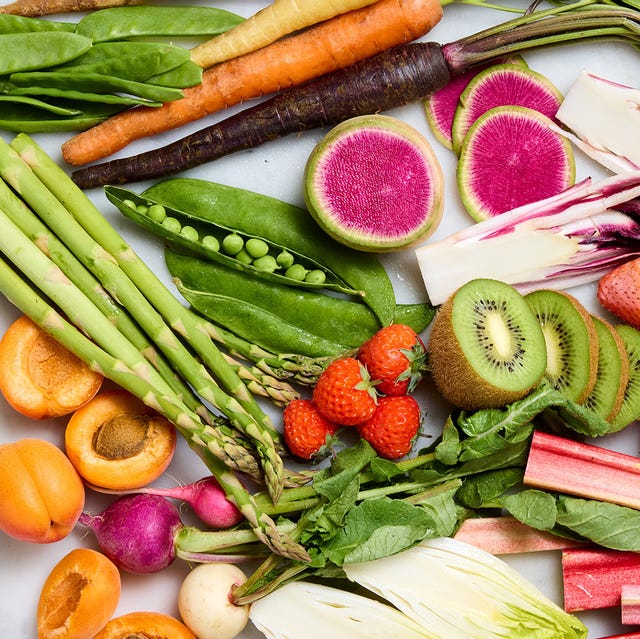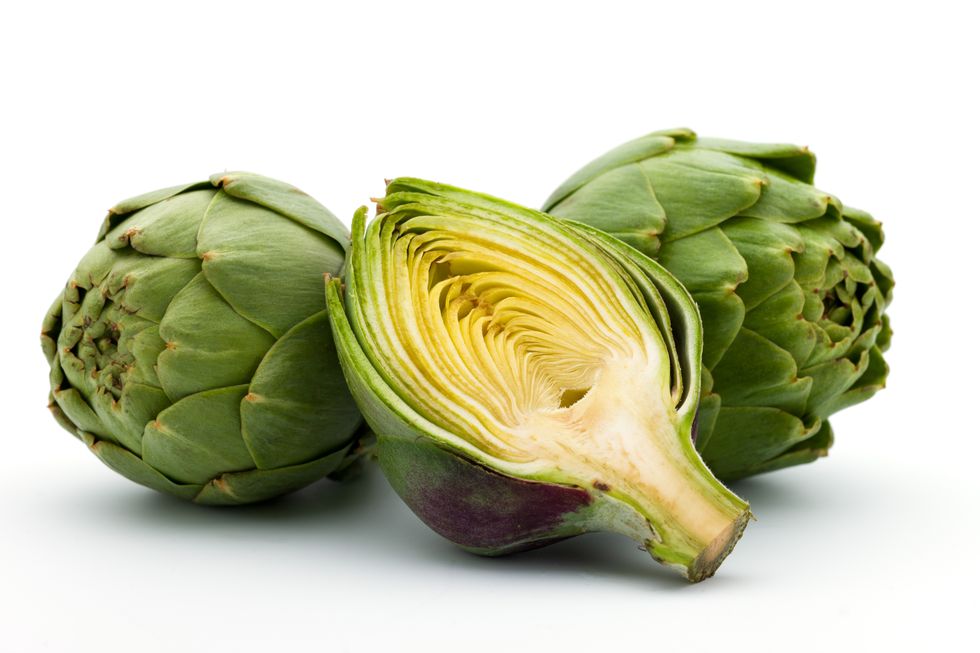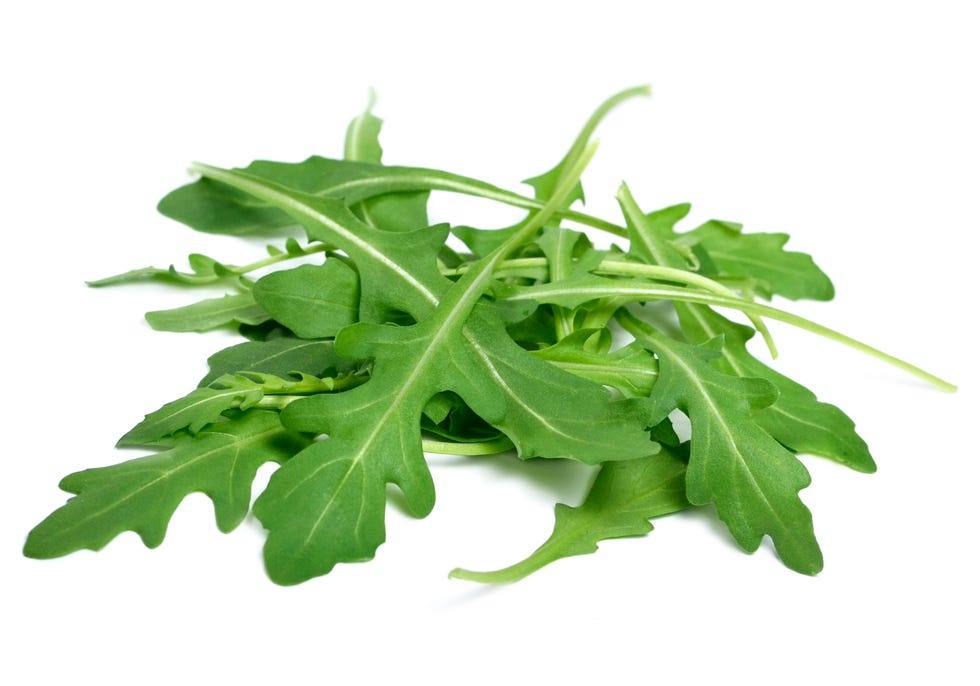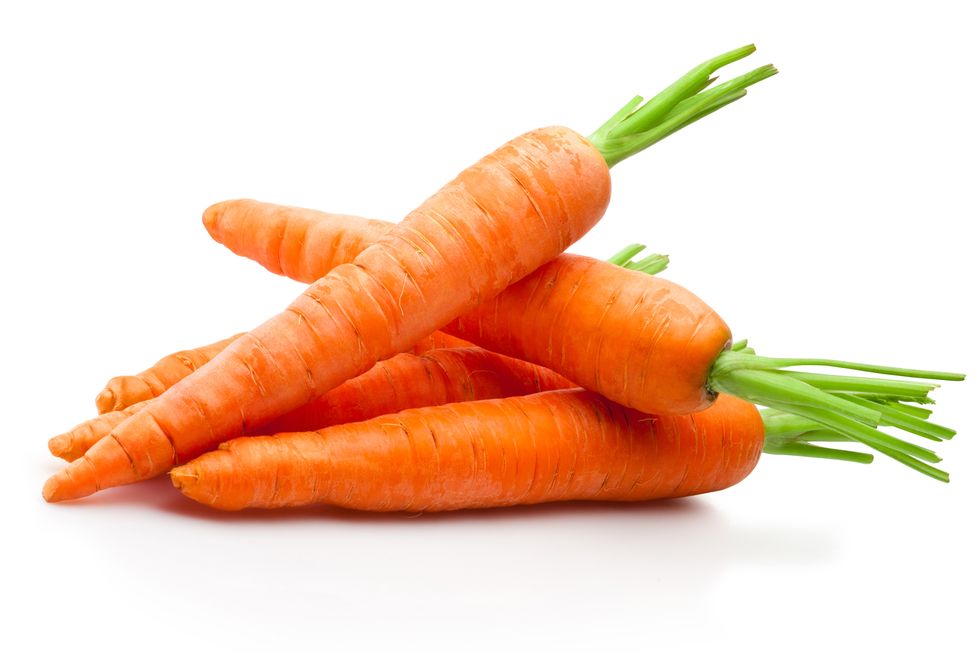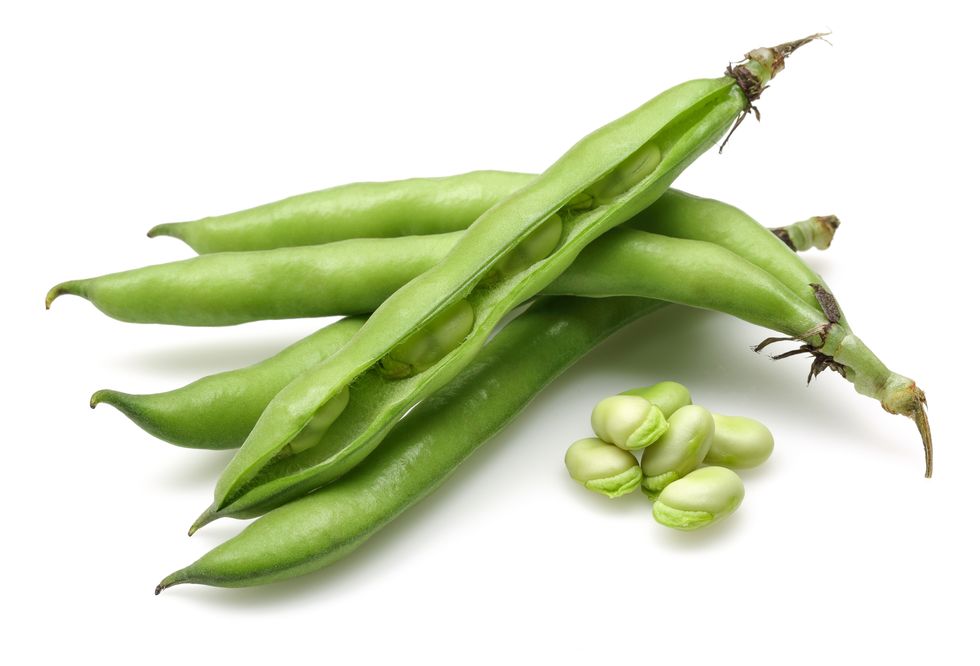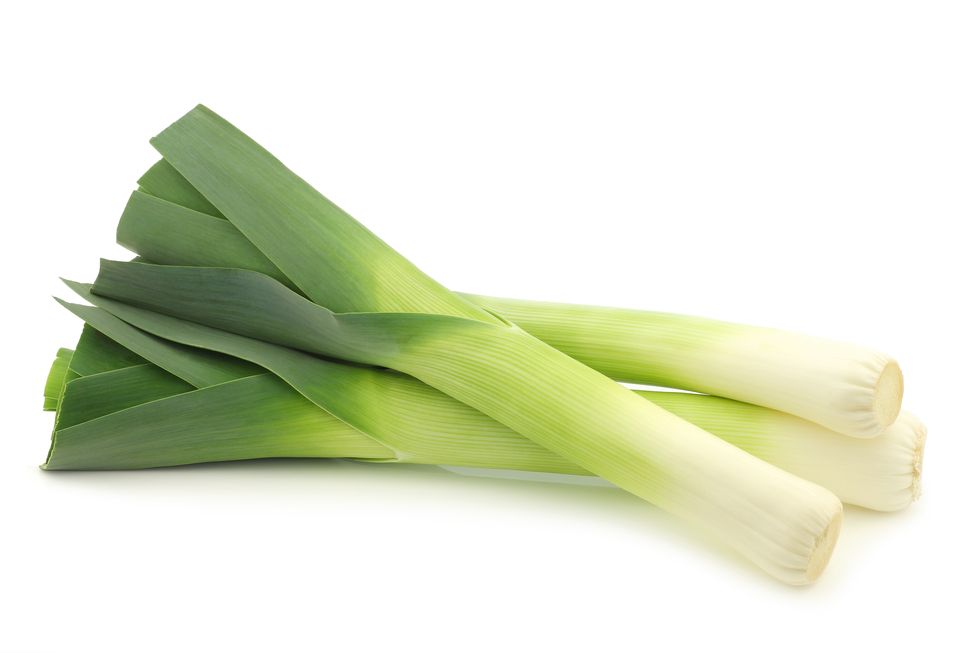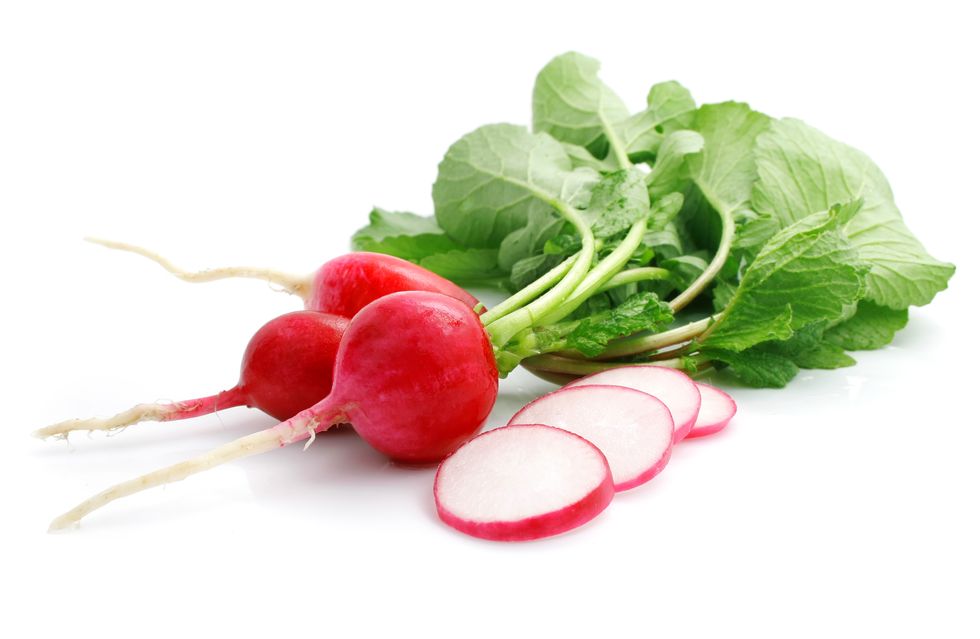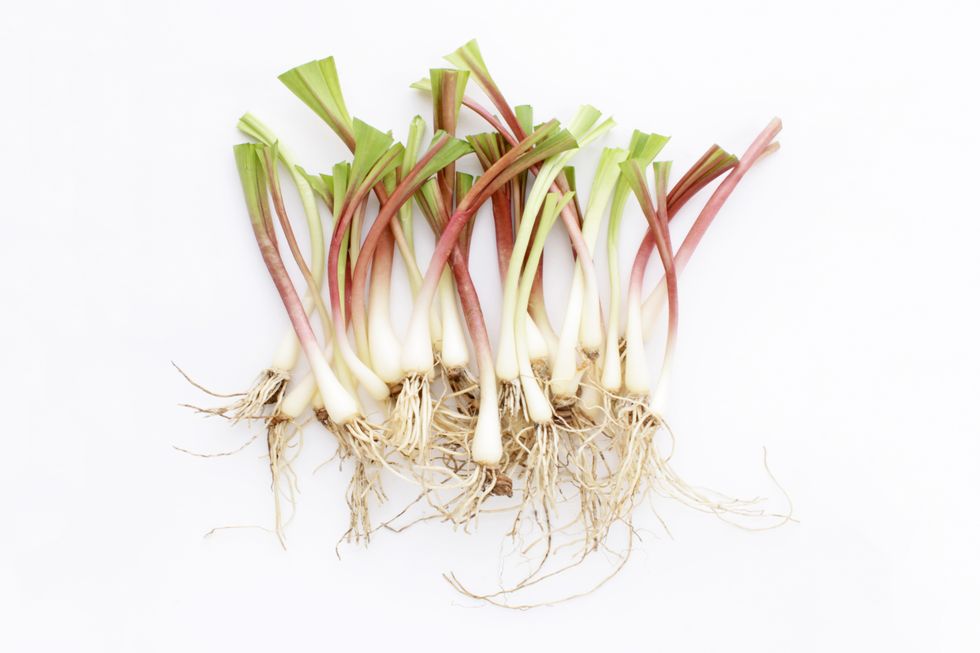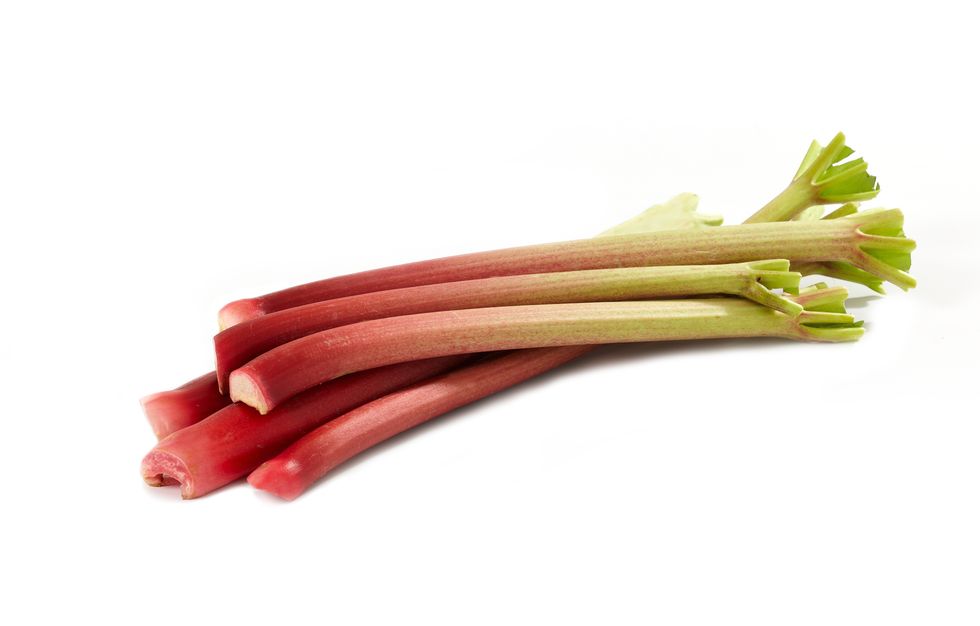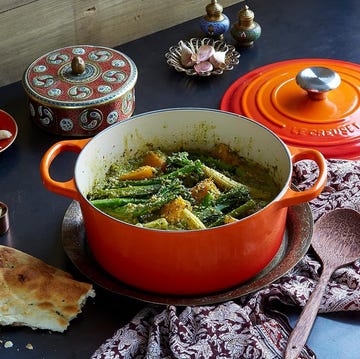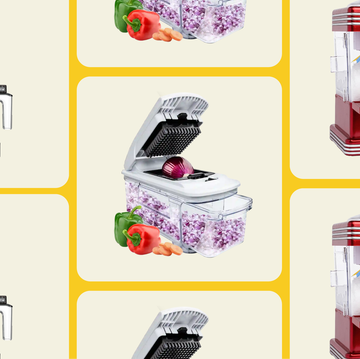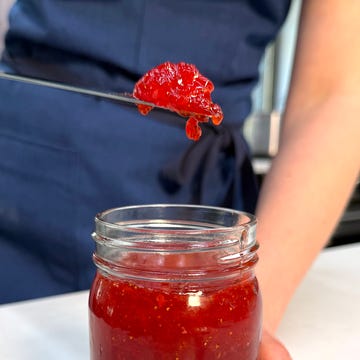This winter was a long one, so we couldn't be more excited to shift into spring. It's finally time to put away our heavy coats, enjoy the newly blooming flowers, and, most importantly, bask in the abundance of spring produce.
These days, you can pretty much find any fruit or vegetable at your grocery store throughout the year. Thanks to modern agricultural technology and global foodways, produce grown in other corners of the world can be enjoyed in the U.S.—even when it's not in season here. That's not necessarily a bad thing, but there are several reasons why seasonal, local produce is superior.
For one, it's usually cheaper. Fruits and vegetables in peak season are abundant and don't have to travel far to get to your grocery store. The rest of the year, they need to be shipped to the States from different climates (or even different hemispheres). The extra logistics, travel fees, and potential impending tariffs all add up to higher prices.
There's another downside to eating out of season produce sourced from far away. To ensure that fruits and vegetables don't spoil in transit, they're usually harvested before they're fully ripe—which means they're much less flavorful. Seasonal produce, on the other hand, is close enough to your kitchen to ripen all the way before it's harvested.
Most importantly, eating in-season produce is the best way to celebrate spring! Something about eating pasta primavera in the fall feels a little wrong. But enjoying it once the tulips start to bloom is just so right.
Here are the fruits and vegetables that are in season this spring, from old favorites to under-the-radar picks.
Apricots
Stone fruit is usually associated with summer, but apricot season actually starts in late spring. These fuzzy fruits strike a balance between sweet and tart with firm flesh. You can find apricots in a wide range of desserts, in plenty of dishes from the Middle East and North Africa, and as sticky-sweet preserves.
Artichokes
Marinated and canned artichokes are staples in the Delish kitchen (have you tried our buffalo artichoke hearts yet?). They're easy and convenient to use all year, but spring is the prime time to get your hands on fresh artichokes.
The plant, which is technically a type of thistle, consists of the tender heart protected by thick, sturdy leaves and lots of prickly, fuzzy hairs that can scratch and tickle your throat (it's called the choke, naturally).
It takes time and some finesse to remove the exterior until you're left with the heart, but it's well worth the effort. Artichoke hearts are delicious grilled, fried, roasted, you name it! Check out some of our favorite recipes here:
Arugula
Arugula is the all-star of salad greens. It's bright, peppery, and has the ideal balance of tenderness and crunch. It's pretty easy to find year round, but spring is the best season if you want to maximize the green's flavor and shop locally.
We like keeping it simple and eating arugula with just olive oil and lemon, but it's also delicious mixed into any salad that needs an extra punch. Here are some of our favorite arugula recipes:
Asparagus
Asparagus is available year-round at most supermarkets, but the best time for finding fresh, local bunches is in the spring. They grow directly out of the ground and are ready for harvest as early as February.
Classic green asparagus is the most common variety. But if you're lucky, you may stumble across white asparagus. Both varieties come from the same exact plant, but white asparagus is grown without exposure to the sun.
Want asparagus recipe inspo? Check out our favorite dishes below:
Carrots
Carrots are nearly always associated with spring—and not just because the Easter bunny likes to eat them. These crisp, sweet root vegetables come in multiple gorgeous hues, like white, yellow, orange, and even purple. They grow best in cool weather, which means these veggies are in season in both the spring and the fall.
Try enjoying carrots raw in a salad or as a vehicle for ranch (just don't use baby carrots, please). They're also part of the foundation for any hearty soup or sauce. And whatever you do, don't throw the tops away: they can be used as the base for a zero-waste pesto.
Dekopon
The first half of spring gets a sweet boost of brightness with Dekopon, which you may also know as Sumo citrus. The fruit was first cultivated in Japan in the '70s as a cross between two other citrus hybrids. It eventually made its way to the States in 2011, where you can enjoy its sweet, seedless flesh from January through April.
Dekopon is typically enjoyed on its own as a snack, but you can also integrate it into any recipe that would normally include oranges, like salads or desserts.
Endive
Endives are in the chicory family, along with vegetables like radicchio and frisée. The're typically associated with winter, but you can get endives through April or May. The crisp leaves can come in green and purple hues and have a pleasantly bitter flavor. Endive leaves are best served with dips, in a salad, or seared to develop a nice char.
Fava Beans
Fava beans are beloved by chefs who wait for them to come in season every spring. It's one of the oldest cultivated plants on Earth, with ancient Mediterranean civilizations eating them as early as 6000 BCE!
Also known as broad beans, these legumes come in a thick green pod. To properly prepare fava beans, you need to remove them from the pod, then peel the thick husk off of each individual bean. It's a painstaking process—especially if you're working with a large quantity—but they taste so good that it's worth the hard work.
You can use them just like you would peas for an extra source of protein and heft.
Fiddlehead Ferns
Fiddlehead fern season typically begins in late April, with a peak in May. These bright green coils are, you guessed it, part of a fern plant—but only fiddleheads from the ostrich fern are safe enough to eat. They do, however, still contain trace amounts of toxins. Fiddleheads need to be cleaned and cooked thoroughly to remove the toxins and the bitter raw taste.
You usually start by blanching these spiral vegetables. But from there, you can grill them, saute them, or even enjoy them pickled.
Garlic Chives
Garlic chives are also known as Chinese chives because they've been cultivated in East Asia for more than 3,000 years. They look similar to the chives you already see in the supermarket, but don't be fooled—these long green vegetables pack a pungent garlicky punch.
Starting in early spring, you can find garlic chives at Asian specialty grocery stores in three different forms with varying levels of intensity. In most applications, garlic chives are cooked before they're served in dishes like dumplings, noodles, and stir-fries.
Kiwi
In the States, kiwi season usually spans from December through May. These fuzzy fruits have a slightly tart green or golden interior with dark seeds. You can take advantage of their sweetness in a wide variety of desserts, or in smoothies and yogurt parfaits.
Leeks
Spring is the best time to enjoy almost any vegetable in the onion family, and leeks are no exception. These hardy vegetables are tender and white at the bottom and transition into the thick, green leaves at the top. They have a mild flavor that's more delicate than a standard onion.
You can swap out onions for leeks in almost any recipe. They're delicious as the base for a potato leek soup, roasted or grilled, or even fried to make a crispy, onion-y topping! But whatever you do, make sure you thoroughly wash your leeks. There's typically sand and sediment between each layer, so they require more scrubbing than your average vegetable.
Morels
Morels are part of the fungi family and are among the most renowned mushrooms among professional chefs. They're only sourced in the wild and have a short season between March and June—so they usually come at a premium.
The earthy, nutty flavor is often utilized in Catalan and French cuisine. You can incorporate them into nearly any mushroom dish; but since they're so pricey, you shouldn't try to cover them up with other ingredients.
Peas
One of the most quintessential spring vegetables is the humble pea. Whether you're in the mood for snow, sugar snap, or the convenient frozen bag, peas add a delicate sweetness and pop of green to almost any dish.
We love snacking on the entire pod (it's one of the best vehicles for hummus) and using pea shoots in salads and stir-fries. Check out our favorite pea recipes below:
Pineberries
The tail end of spring marks the beginning of the brief but beloved pineberry season. These adorable berries are a naturally occurring cross between two different strawberry cultivars. The white flesh is also an effective protection mechanism—it deters wild animals by tricking them into thinking the fruit is unripe.
Pineberries get their name because they share a very similar flavor to pineapple. The tropical-tasting berry is like a Miami Vice cocktail in fruit form. Just be careful—they are much more delicate than your average strawberry.
Radishes
Whether you use them as a topping for street tacos or simply enjoy them with butter and salt, radishes are a staple spring vegetable. These crisp, peppery root vegetables are great additions to any salad when you want to add variety in texture and color.
There are the standard red radishes you can find at the supermarket, but many other varieties deserve your attention. Daikon radishes make for a delicious pickle or base for kimchi, French breakfast radishes have an adorable oval shape that's perfect for snacking, and have you seen the inside of a watermelon radish?! Check out our favorite radish recipes below:
Ramps
The most anticipated vegetable of the season is only available for a short time, and onion enthusiasts on the East Coast swarm their local farmer's market to get their hands on them. Also known as wild garlic or wild leeks, ramps are foraged for only a few weeks between April and June.
They look just like a green onion, but these fragrant veggies taste like a cross between onion and garlic. If you can get your hands on a bunch, try grilling them, grinding them up into a pesto, pickling them, or stirring them into some softened butter.
Red Lettuce
Leafy greens generally prefer cooler temperatures, especially varieties that are more delicate. Red leaf lettuce is a prime example of a spring salad green. The loose leaves have vibrant red hues that make any simple salad feel special. But you shouldn't stop there! We also love using red leaf lettuce as a low-carb alternative to hamburger buns or wraps.
Rhubarb
You may associate rhubarb with strawberries (and desserts), but these long, pink stalks are actually considered a vegetable. Raw rhubarb has a distinct, almost overwhelming tartness, but when cooked, usually with plenty of sugar, its sourness mellows out.
Cooked rhubarb tastes almost like a cross between a green apple and celery—which sounds weird, but hear us out. It tastes delicious as the base for cakes, tarts, pies, and preserves. Still don't believe us? Give the recipes below a spin and see for yourself.
What are your favorite ways to use spring fruits and vegetables? Let us know in the comments.
